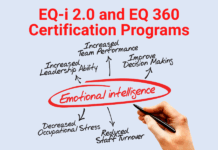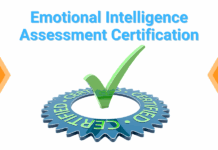Would you like a powerful and lasting way to create fierce loyalty in any group setting? Do you want a master key to the hearts and minds of your next audience?
In his book, Fiercely Loyal: How High Performing Companies Develop and Retain Top Talent, author Dov Baron states that the most effective leaders of tomorrow will do one primary thing—keep top millennial talent. In his book he not only lays out a plan that will result in retaining talent, he offers steps that generate massive engagement and what he calls, Fierce Loyalty.
While there are many gems in the book, my favorite chapter comes at the end and is called, “Creating Your Full Monty Story.” Authenticity has been a popular leadership topic over the last many years and Baron, too, suggests that people need to see leaders “naked” (i.e., vulnerable) in order to build trust and to connect.
He details a seven-step story telling formula that enables you to quickly bond with any audience. There are similarities to his approach to the classic hero’s journey structure, which has been popularized by Joseph Campbell. In this case, you are the hero in your own story.
The Full Monty Story Formula
Step 1: Describe the present
To capture attention quickly, Baron suggests that you briefly describe who you are and your achievements, but immediately say something surprising or unusual. This could be a fact, statistic, or anything that might have some shock value. This entire first step should last no longer than 60 seconds.
Step 2: Remember the past
Too many people feel they earn trust and credibility by showing how great they are in the present moment. However, real trust is earned when we share a failure or something painful from our past. Done correctly, this isn’t “too much information” (TMI) but rather making us relatable. Showing that you’re human, too, and also on a never ending journey to get better.
Baron’s advice is similar to the “zero to hero” advice I give as well. In my own talks, I often start by sharing the time when I was “young and dumb” and because of poor leadership skills and worse time management practices I literally drove my first two companies out of business.
Step 3: Share pain or a personal nightmare
Baron uses an example of a public speaker who shared the time she was first sexually assaulted, thus painting a vivid picture for the audience of her true origins. While not all of us have had such traumatic episodes, and we might not want to share them publicly, we all have specific stories of our low points. It might be the time when you were fired from a job, or lost a major account, or didn’t get the promotion. The idea is to humanize and dramatize your true story through the sharing of specifics.
Step 4: Impetus to change
This is the turning point in your personal story. This is the point in your life when you’ve reached the lowest lows and decided to make a change. In classic story structure, this is usually the mid-point of a movie or novel where the protagonist has a “man/woman in the mirror moment.” It’s the scene where the character must dig deep and either give up, or decide to change and grow to become a person who will ultimately claim victory.
Sound dramatic? I bet you’ve had several moments of change in your life. In your personal life, do you remember the specific time you decided to go from being a bad student to a good student in school? What about the time you decided divorce was the only answer? When did you decide to finally lose that weight and get into shape? Or on a professional level, when did you decide to go back for your MBA? When did you decide you were going to switch careers? When did you decide you wouldn’t take no for an answer?
Step 5: Something better
This is where you set out on your new path with determination. What does the “new you” look like?
Step 6: The battle
Remember, the movie isn’t over when the hero decides to become a better person. That’s just the mid-point! The world fights back making our hero earn her victory. How did you fight through temptations when you got into shape? Did you struggle working a full-time job and going back to school at night to earn your degree? How did you struggle to convince your boss that you were ready for the promotion? How did you struggle to first open the door of your biggest account?
Step 7: The bridge
The final part of your Full Monty Story is where you clarify the relevance of your pain story to the audience, and how it ties in to what your organization or group is all about. How did your own experiences in life prepare you to serve those around you today? How did your painful moments shape you—give you the skills and attitude—necessary to succeed today?
Done correctly, your Full Monty Story delivered in just a few minutes is a powerful way to make a strong impact and immediate connection. Instead of just a forgetful name and title, instead of a rambling list of career accomplishments, instead of a list of ego-puffing achievements, when you become vulnerable—naked—and share a painful moment, a turning point and your battle, you will connect on an emotional level and endear yourself to others, who see a bit of themselves in your journey.
—
Kevin Kruse is the author of the bestselling book Employee Engagement 2.0 and the Personal Engagement Personality Quiz.















